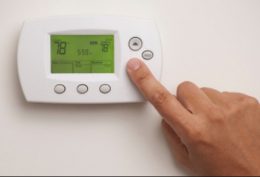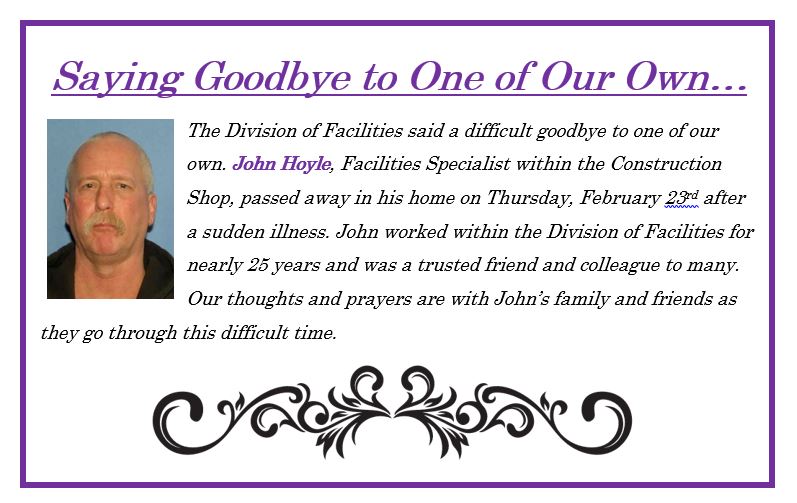By Gary Weishaar, Energy Engineer
It’s Spring Time! Put away those winter coats and snow shovels and get outside! It’s time to fire up the BBQ grills and air-conditioners!
If you’re like most people that get cabin fever in these long winter months, that is great news. However, the start-up of air-conditioners also means our electric bills will start to rise. I’m sure you have heard many different tips on how to lower your utility bill, but can you believe them? Upon examination, it’s clear that some of these popular “tips” should be treated with some healthy skepticism. Sometimes the basic premise is correct, but the energy savings are much smaller than people realize. In other cases, the myth is based on factors that were once true but have been subsequently resolved through better design or manufacturing of products.
Here are a few you may have heard and the facts behind them:
MYTH #1 – Setting the Thermostat Higher Heats Your Home Faster
TRUTH: You might think that by cranking the thermostat up to 88˚F in a cold room is going to make the room heat up faster, but you would be wrong. It’s like repeatedly pressing the elevator button to make it come faster: it’s not going to make a difference. Thermostats direct a home’s HVAC system to heat or cool to a certain temperature. Setting a higher temperature won’t influence the speed at which a home is heated. In fact, you may waste energy by forgetting to reset the temperature once the home has been heated. Instead, simply set the thermostat to your ideal temperature. The same principle applies to cooling a house.
room is going to make the room heat up faster, but you would be wrong. It’s like repeatedly pressing the elevator button to make it come faster: it’s not going to make a difference. Thermostats direct a home’s HVAC system to heat or cool to a certain temperature. Setting a higher temperature won’t influence the speed at which a home is heated. In fact, you may waste energy by forgetting to reset the temperature once the home has been heated. Instead, simply set the thermostat to your ideal temperature. The same principle applies to cooling a house.
MYTH #2 – Keeping a Ceiling Fan Running Cools the Room
TRUTH: Rooms don’t feel hot – people do. Ceiling fans circulate air, making your skin feel cooler. This allows you to save energy by raising the thermostat. It doesn’t actually change the temperature of the room. Therefore, there is no benefit to running a fan in an empty room. It just wastes electricity and money.
MYTH #3 – Buying an efficient air conditioner or furnace will automatically reduce your energy bill.
TRUTH: While this is partially true, you won’t realize all the possible savings if the equipment is not sized or installed properly. Studies have shown that when a typical furnace, air conditioner and/or duct system is improperly installed, one-third or more of the heated or cooled air they produce actually goes to waste. This misapplication will more than offset any advantages gained by purchasing the most energy-efficient models. The same thing can be said for improper installation of windows, insulation, and other energy efficiency upgrades.
MYTH #4: Closing the vents and registers in unoccupied rooms saves energy.
TRUTH: This sounds logical, but it would be wrong. Air-conditioners and furnaces function as part of a balanced system. By closing off one vent, it places a strain on other areas of the system, forcing it to work harder and use more energy rather than less. This could also shorten the life of the unit. Therefore, there is no point in shutting off vents and registers in an effort to save energy. A better way is to set the thermostat a couple of degrees higher in summer or lower in winter.
MYTH #5 – Leaving lights, computers, and other electric appliances turned on when you are not going to be gone for very long is a good idea. Switching them on and off all the time wears them out more quickly, and produces sudden power spikes that negate any supposed energy savings.
TRUTH: If there was ever any legitimacy to this idea, there isn’t anymore. Technology has changed and switching sophisticated modern appliances and electrical devices on and off frequently will not reduce their life span. In addition, any power surges that might occur are likely to be miniscule. The bottom line is that if you aren’t using an electrical device it should be turned off. However, there is more to the story. Read on……
Technology has changed and switching sophisticated modern appliances and electrical devices on and off frequently will not reduce their life span. In addition, any power surges that might occur are likely to be miniscule. The bottom line is that if you aren’t using an electrical device it should be turned off. However, there is more to the story. Read on……
MYTH #6: Appliances don’t use energy when they are turned off.
TRUTH: Maybe in the past they didn’t, but they do now thanks to those trusty standby power settings. Makers of electronic devices believe that Americans love convenience above all else, so the items they manufacture are ready to pop on immediately as soon as the switch is flipped or a button is pushed. Some of these devices use almost as much energy when they are supposedly turned off as they do when they are turned on. They can draw power 24 hours a day, often without the knowledge of the consumer. The only way to keep them from using power is to unplug them. Or, better yet, use a power strip with a switch to turn off a group of devices all at once.
MYTH #7: Leaky faucets in your sinks or tubs are really no big deal.
TRUTH: This one may surprise you…one faucet leaking at a rate of one drop
per second will waste more than 3,000 gallons per year! That can amount to a significant amount of money. In addition, if the faucet that is leaking should happen to be a hot water faucet, that will put your hot water heater into constant and costly use. If you have faucets that are leaking, fix them. It may take nothing more than a 50-cent washer to solve your problem.
MYTH #8: Duct tape is good for sealing ducts.
TRUTH: Duct tape is good for everything, right? You can make wallets and beer koozies…SURELY it will seal ducts. Unfortunately, despite the name, studies have concluded that duct tape has very low durability when used to seal ducts. On new installations, tape often falls off due to poor surface preparation and because ducts tend to be installed in dirty and dusty locations and conditions. On older systems, the tape falls off as it ages and the adhesive dries out and wrinkles. Instead of duct tape, seal ducts with mastic.
MYTH #9: Light Emitting Diode (LED) bulbs are too expensive.
TRUTH: You’ve all seen the funny looking new lightbulbs in the odd shapes and styles. These are most commonly referred to as LEDs (Light Emitting Diodes). If you’ve ever been in the light bulb aisle at Wal Mart, you have probably experienced sticker shock. At first glance, LED bulbs will seem more expensive – and the initial cost IS substantially higher. HOWEVER, you need to factor in the life-cycle value. The average life span of the old incandescent style is about 1,200 hours. For LEDs, the life span is about 25,000 hours. In addition, the incandescent uses about 60W of power and the comparable LED uses 10W of power. With that in mind, the total operational cost over a 23-year life span (or 25,000 hours at an average use of 3 hours a day) would be $201 for that old-fashioned bulb compared to $38 for the newer LED. Considering a typical home has about 30 light fixtures, you can imagine the potential savings.
MYTH #10: You can save Energy by Washing Dishes by Hand Instead of the Dishwasher
TRUTH: What many people may not realize is that while it’s widely believed that automatic dishwashers are just for convenience, hand washing dishes actually uses more hot water per load than using a machine….as much as 37 percent more. Many modern dishwashers have energy efficiency settings that use less water and energy to keep costs down. Take advantage of these settings to save money and energy when doing your dishes. (And guys….this could give you an excuse to get out of the kitchen sooner!!)
These are just a few of the many misconceptions about energy efficiency. Bottom line – by using common sense and doing a little research, energy efficiency can be considered an investment rather than an expense. By changing our mindset to more closely reflect this view of energy efficiency, the upfront cost becomes more acceptable to many. It will not only save dollars now but also help improve the environment for future generations.




 Form 1095-C employer-provided health insurance offer and coverage form is now available. The form has been mailed by the State Employee Health Plan to employees’ homes and is available to print from the Membership Administration Portal.
Form 1095-C employer-provided health insurance offer and coverage form is now available. The form has been mailed by the State Employee Health Plan to employees’ homes and is available to print from the Membership Administration Portal.







